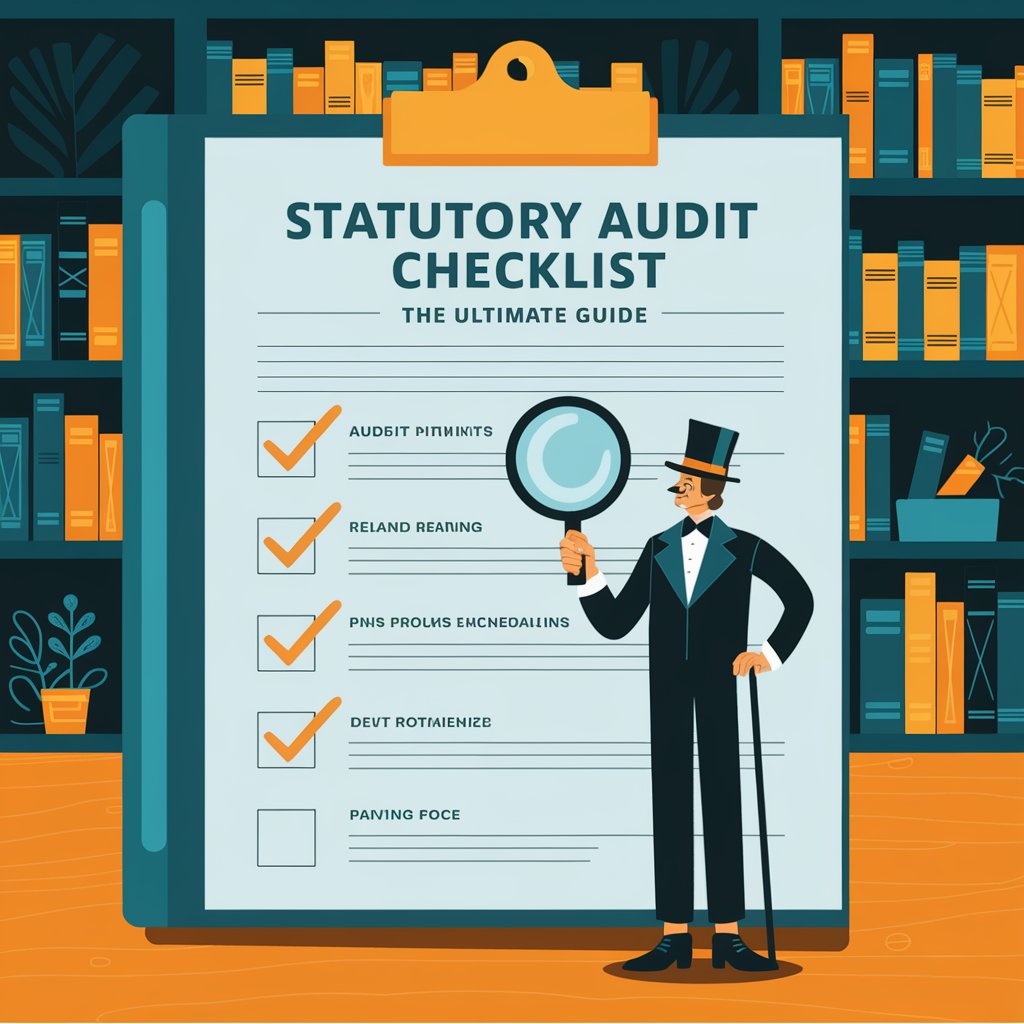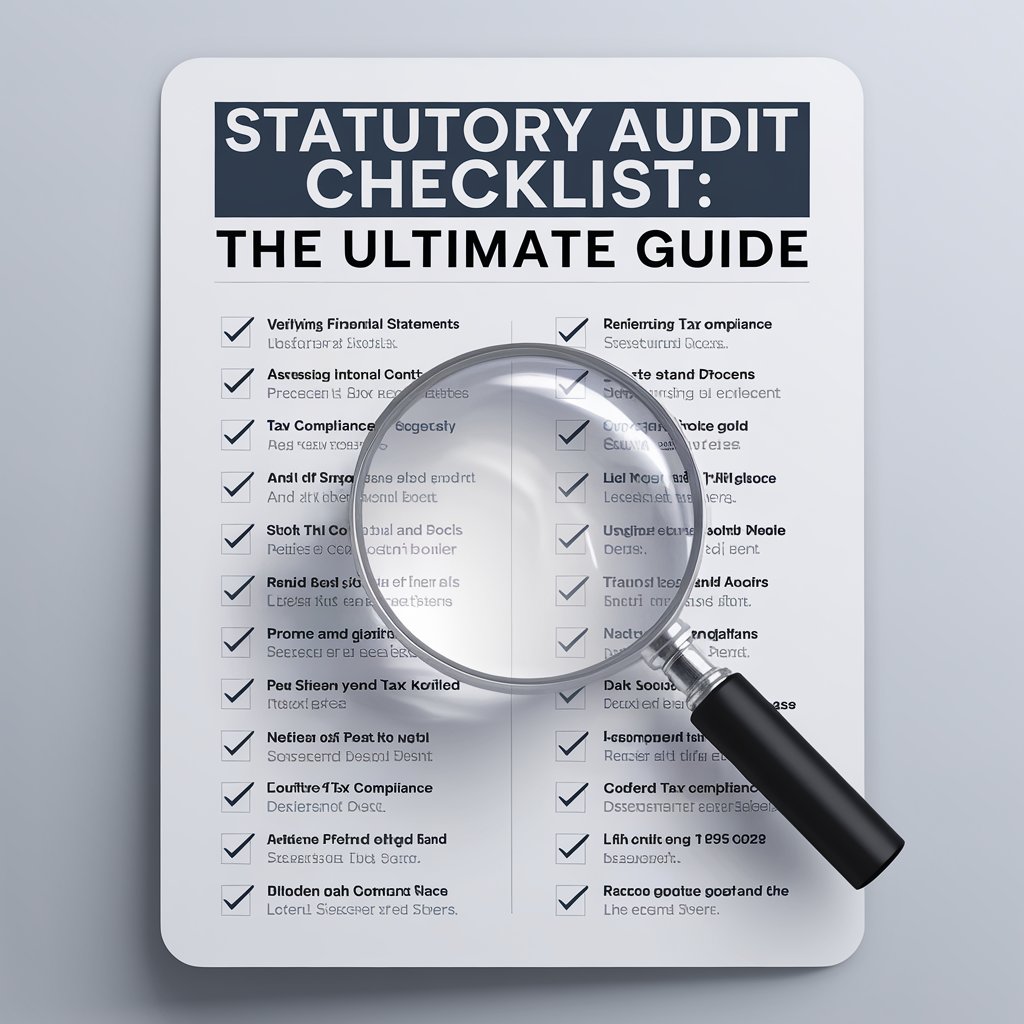Introduction to Statutory Audit|Statutory Audit Checklist
A statutory audit is an independent review of a company’s financial records to ensure compliance with statutory and regulatory requirements. It is mandatory for certain businesses and is conducted by a qualified auditor.
For businesses operating in multiple jurisdictions, understanding the statutory audit checklist is crucial to maintaining transparency and avoiding legal penalties.
In this comprehensive guide, we will cover:
✅ Statutory audit procedures
✅ Step-by-step statutory audit checklist
✅ Audit compliance requirements in different countries
✅ Best practices for a seamless audit

What is a Statutory Audit?
A statutory audit is an external audit mandated by law to verify the accuracy and fairness of a company’s financial statements. It helps in:
✔️ Ensuring compliance with financial reporting laws
✔️ Preventing financial fraud and misstatements
✔️ Boosting investor confidence
✔️ Enhancing transparency and accountability
Who Conducts a Statutory Audit with help of Statutory Audit Checklist?
A registered external auditor or chartered accountant carries out statutory audits. The auditor examines the financial statements and issues an audit report detailing whether the records comply with applicable accounting standards.
Statutory Audit Checklist: A Step-by-Step Guide
The statutory audit checklist serves as a roadmap for auditors to ensure that financial statements are complete and comply with regulations.
- Pre-Audit Preparation
🔲 Understand business structure & operations
🔲 Review previous audit reports
🔲 Assess risk factors & compliance requirements
- Audit Planning
🔲 Identify audit scope & objectives
🔲 Assign audit team responsibilities
🔲 Set timelines for audit fieldwork
- Review of Financial Statements
🔲 Balance Sheet
🔲 Profit & Loss Statement
🔲 Cash Flow Statement
🔲 Notes to Accounts
- Verification of Financial Transactions
🔲 Revenue Recognition – Check sales invoices & revenue records
🔲 Expenses & Liabilities – Review invoices, receipts, and outstanding payables
🔲 Bank Reconciliation – Verify bank statements with financial books
- Internal Control & Compliance Checks
🔲 Verify adherence to GAAP/IFRS standards
🔲 Assess tax compliance (GST, VAT, Corporate Tax, etc.)
🔲 Ensure compliance with Companies Act & regulatory filings
- Final Audit Report & Recommendations
🔲 Prepare audit findings & observations
🔲 Draft audit opinion (unqualified, qualified, adverse, disclaimer)
🔲 Submit statutory audit report
🔹 Pro Tip: Keeping financial documents well-organized ensures a smooth audit process and minimizes discrepancies.
Statutory Audit Requirements in Different Countries
|
Country |
Statutory Audit Threshold |
Regulatory Body |
|
USA |
Public companies & large private firms |
SEC, PCAOB |
|
UK |
Companies with turnover > £10.2M |
Financial Reporting Council (FRC) |
|
India |
Companies exceeding turnover of ₹50M |
ICAI, Companies Act 2013 |
|
UAE |
Mandatory for all Free Zone companies |
UAE Ministry of Economy |
|
Australia |
Entities with revenue > AUD 25M |
Australian Auditing and Assurance Board (AUASB) |
💡 Note: Audit requirements vary by country and industry. Always consult a local chartered accountant for up-to-date regulations.
Key Components of a Statutory Audit services
✅ Financial Statement Analysis
✅ Internal Control Review
✅ Risk Assessment & Fraud Detection
✅ Tax Compliance & Legal Adherence
✅ Audit Opinion & Report Issuance
Who Needs a Statutory Audit?
✔️ Public Limited Companies (PLCs)
✔️ Large Private Companies (as per turnover thresholds)
✔️ Non-Profit Organizations (NGOs)
✔️ Government Entities & Listed Firms
💡 If your business meets the statutory audit criteria, ensure timely compliance to avoid penalties.
Common Challenges in Statutory Audits
❌ Lack of documentation – Missing financial records
❌ Non-compliance with regulations – Ignoring tax laws
❌ Fraudulent financial reporting – Intentional misstatements
❌ Poor internal controls – Weak governance structures
Solution: Implement a robust internal audit system to minimize errors before an external statutory audit.
Statutory Audit vs Internal Audit: What’s the Difference?
|
Factor |
Statutory Audit |
Internal Audit |
|
Mandate |
Required by law |
Optional for business |
|
Conducted By |
External auditor |
In-house audit team |
|
Focus |
Compliance & accuracy |
Process improvement |
|
Frequency |
Annually |
Quarterly/monthly |
💡 Best Practice: Conduct internal audits regularly to prepare for statutory audits.
Best Practices for a Smooth Statutory Audit Process
✔️ Keep financial records organized
✔️ Ensure compliance with tax & regulatory laws
✔️ Use accounting software for accuracy
✔️ Conduct internal audits before statutory audits
✔️ Maintain proper internal controls
Recommended Tools:
📌 QuickBooks – Financial statement preparation
📌 Xero – Automated bank reconciliation
📌 Zoho Books – Compliance & tax filings
Conclusion
A statutory audit is a mandatory financial review that ensures compliance, transparency, and financial accuracy. By following this comprehensive statutory audit checklist, businesses can:
✅ Avoid legal penalties
✅ Ensure compliance with financial laws
✅ Gain investor trust
Download free Statutory Audit Checklist for Indian Companies
A statutory audit is a legal requirement to review financial statements, while a tax audit verifies compliance with tax laws.
Key documents include:
📌 Balance sheet
📌 Profit & Loss statement
📌 Bank statements
📌 Tax returns
The process usually takes 2-6 weeks, depending on business size and complexity.
Yes, small businesses below turnover thresholds are often exempt.
If discrepancies are found, businesses must correct errors, explain variances, and improve internal controls.
Table of Contents
Toggle



